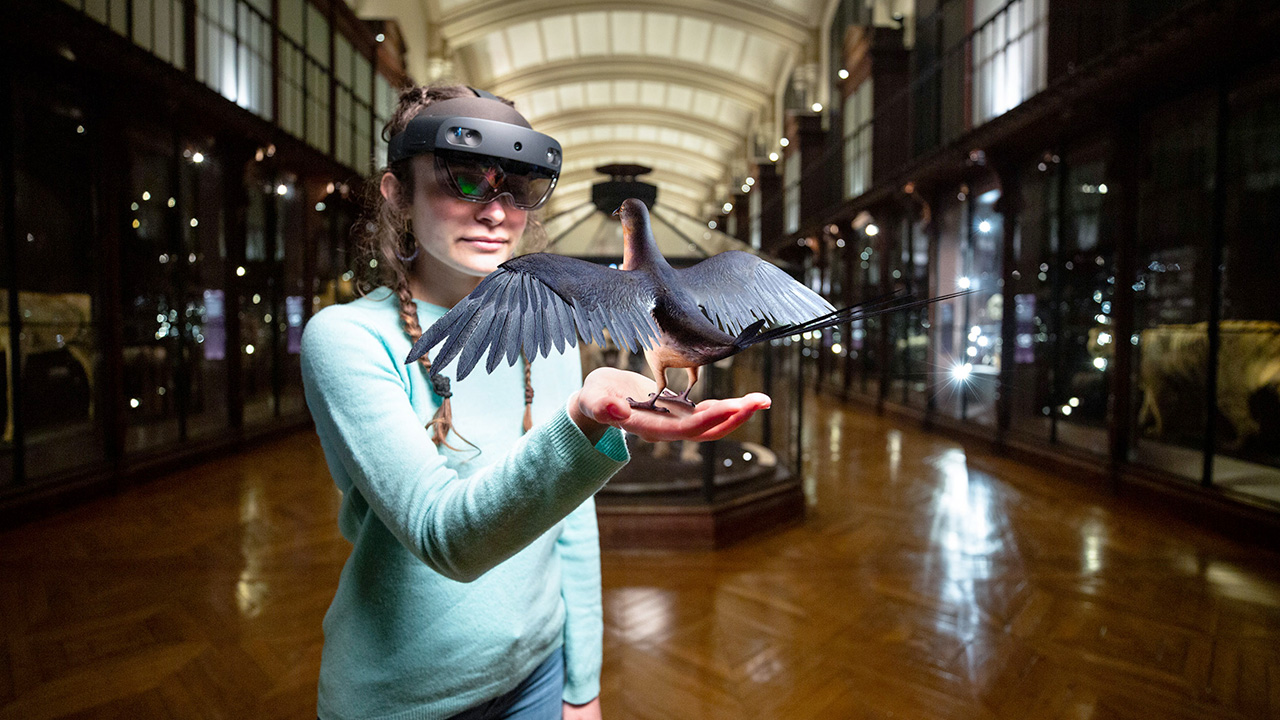
This is a story that deserves a Spielbergian adaptation. Four years ago, Jeremy Frey, a filmmaker, visited the French National Museum of Natural History with his daughter. They walked through the Grand Gallery of Evolution which contains some 7,000 animal specimens. Behind glass in a large hall were models of extinct and endangered species, from the dodo and the saber-toothed Tiger, all stuffed, still, and silent. It was a shame, she said to her father, that they couldn't see these animals in motion.Frey was inspired to bring these extinct animals back to life using AR, not ancient DNA. To realize his project, he founded SAOLA, an AR studio based in France. Revivre is a permanent AR installation that was launched in June at the MNHNs Grand Gallery of Evolution. It allows visitors to interact with 11 extinct animals in close proximity.Revivre, as experienced with Microsofts HoloLens 2, smart glasses, is meant to be family-friendly and also emphasize environmental conservation. Yann Kerbart is the SAOLAs Operation manager. He tells Jing Culture & Commerce that we wanted to create a unique and stunning experience but also wanted technology to serve the message of conserving biodiversity.Visitors can commune with long-deceased species such as the thylacines, the elephant birds and the Stellers sea cows in the Grand Gallery. An audio guide explains their habitats, contact with people, and eventual disappearance. SAOLA's 30-member team relied on Rmi Dupouy, a nature reporter, as much as MNHNs extensive documentation which includes drawings and testimonies to ensure scientific accuracy. After six months of research and writing, seven months were spent on 3D modeling, animation and rendering. Kerbart notes that museum experts have validated each stage of creation.This was also a case where realism was crucial. Kerbart explains that SAOLA used a precalculated technique, which is not commonly used in virtual reality (VR) or augmented reality (VR). It allowed for more realistic renderings and a better user experience. AR was chosen over VR to provide virtuality, but without being disconnected from reality. Visitors are expected to be able to move freely through the halls like a traditional visit, with no visual or audio distractions.The Grand Gallery plays a similar role in the experience. The exhibition is site-specific and draws the attention of its viewers to historic halls' spatial qualities as well as the stately, cast-iron-ringed architecture. It's no surprise that Revivre was embraced by the Parisian institution when it was first presented. Kerbart, from the studios partnership, said that it was a true collaboration where each person uses their own skills. We provide the complete experience and the museum handles the ticketing, communications, and on-site operations.He is a passionate advocate for the educational and entertainment value that AR technology can bring to venues. Kerbart states that AR can be a very attractive and educational tool. It is also easy to transport for museums. It can be cost-effective if you find the right economic models.These stories will be delivered directly to your inboxHe wouldn't be wrong. AR has been used by many arts organizations in the past year to reduce social distance. As reopenings begin, continue to be tapped for reimagining zoos and walking tours and New York's High Line. Kerbart says that just as museums might seek out Revivre to highlight their collections and renew their audiences, so too is the museum-going public.AR adoption is not a barrier to an audience that has become accustomed to digital offerings. This, in turn, drives innovation in the field. Kerbart believes AR is the future visitor experience.
